Lava Iris X1 review
Lava launched its latest mid-range smartphone, the Iris X1 a couple of weeks ago. The Indian manufacturer has promised to deliver high-end smartphone experience at super attractive price tag.
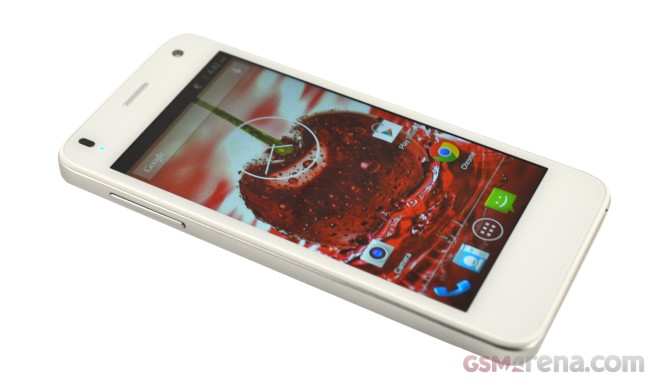
The Lava Iris X1 comes with a quad-core 1.2GHz processor along with Broadcom VideoCore IV GPU on a Broadcom chipset. Let’s see how well it performs.
Retail Package
The Lava Iris X1 is packed in a standard retail box, inside which you can find A/C adapter, USB cable, headset, some paperwork, screen protector as well as the nice surprise that is the flip cover.
Design
Lava has decided to go with the same design language as that of the Iris Pro 30. Sadly, the newest smartphone doesn’t bring any novelties. The Iris X1 is built using plastic with brushed aluminium frame running around the front panel. The device is a bit on the heavy side but that also contributes to the solid in hand feel it gives.
On the front of the smartphone, we have the display along with three capacitive touch buttons – home, back and menu. These virtual buttons find themselves on the bezel, below the display and are not placed on-screen. The secondary camera, LED notification and an array of sensors are located on top.
The power button is located on the right side of the smartphone and the volume rockers can be found on the left. The 3.5mm audio jack along with USB port is placed at the top, which means that the bottom is completely vacant.
At the back is where the 8 megapixel camera lens, the dual-LED flash and a microphone noise cancellation pinhole can be found. The speaker grille is right at the bottom centre. Underneath the back panel lie the removable battery and the three card slots – one of the microSD and two for SIM cards.
Display
Lava Iris X1 is equipped with a 4.5-inch IPS LCD display with a resolution of 480 x 854 pixels. The numbers add up to a pixel density of 218ppi – which is quite modest by today’s standards.

In terms of the quality, the display has natural looking colors and the sharpness is quite sufficient. However, the visibility isn’t that great in outdoors and it tends to wash out considerably. There’s moderate contrast shift, but everything on the screen remains legible no matter how wide you tilt.
User Interface
Lava’s newest mid-range offering comes with Android 4.4 KitKat on board and the user interface remains largely similar to the stock Android. The quad-core 1.2GHz CPU along with the help 1GB of RAM does manage to keep the device running smoothly, but there’s considerable amount of lag when multiple applications are opened in the background.




Homescreen • App drawer • Settings menu
The good news is that the Iris X1 doesn’t come with unnecessary bloatware as the phone doesn’t carry any home-back or third-party software baggage. So, you get to pick your own favourites from the Google Play Store.
Synthetic Benchmarks
Performance of the device is one of the key aspects that most of us look for before picking up the product. So, we decided to take the Iris X1 for a benchmark spin in order to stack it up against some of its competition.
The first test was the single core CPU performance of the device with the help of the Benchmark Pi. As expected, the mid-ranger was only capable of delivering uninspiring performance with a score of 400.
Benchmark Pi
-
Samsung Galaxy S4 mini
166 -
Sony Xperia Z
264 -
HTC Butterfly
266 -
Oppo Find 5
267 -
HTC One X+
280 -
LG Optimus G
285 -
HTC One mini
293 -
Karbonn Titanium X
298 -
Samsung Galaxy Express
346 -
Lava Iris Pro 30
372 -
Xolo Q900
388 -
Lava Iris X1
400 -
Sony Xperia M
400 -
Lenovo P780
407 -
Samsung Galaxy S II Plus
409 -
Sony Xperia L
435 -
Gigabyte GSmart Maya M1 v2
488 -
Samsung Galaxy S III mini
499 -
Sony Xperia go
543 -
HTC Desire 600 dual sim
554 -
Samsung Galaxy Core
578 -
HTC Desire X
639 -
Sony Xperia E dual
800 -
Samsung Galaxy Young
831
Second up, we aimed to test the overall performance of the smartphone with the AnTuTu benchmarking. The score of 13,240 points was about as good as we could expect.
AnTuTu
Higher is better
-
HTC One
22678 -
Sony Xperia Z
20794 -
Karbonn Titanium X
15397 -
Oppo Find 5
15167 -
Samsung Galaxy S4 mini
14518 -
Lenovo P780
13611 -
Lava Iris Pro 30
13502 -
Xolo Q900
13292 -
Lava Iris X1
13240 -
Gigabyte GSmart Maya M1 v2
13216 -
HTC Butterfly
12631 -
HTC One mini
11434 -
HTC Desire 600 dual sim
11203 -
Sony Xperia M
9902 -
Sony Xperia L
9746 -
Nokia Lumia 620
9140 -
Samsung Galaxy Core
7408 -
Samsung Galaxy Xcover 2
6650
We then had the Broadcom VideoCore IV GPU sweating it out. The Epic Citadel test reveals that the company has opted for a lower clocked graphics unit.
Epic Citadel
Higher is better
-
Samsung Galaxy S4 (Octa)
59.8 -
Samsung Galaxy S4 (S600)
57.1 -
HTC One
56.4 -
HTC One mini
56 -
Sony Xperia Z
55.6 -
Samsung Galaxy Mega 6.3
55.5 -
Samsung Galaxy S4 mini
54.7 -
Nexus 4
53.9 -
Asus Padfone 2
53.4 -
Sony Xperia M
53.2 -
LG Optimus G
52.6 -
Karbonn Titanium X
46.2 -
Lenovo P780
44.1 -
Samsung Galaxy S III
41.3 -
Lava Iris X1
38.0 -
Gigabyte GSmart Maya M1 v2
34.0 -
Samsung Galaxy Core
24.9 -
Lava Iris Pro 30
16
Lastly, we had the Vallamo test that reveals the browsing performance of the device. The smartphone managed to find itself on the lower half of the table.
Vellamo
Higher is better
-
Sony Xperia SP
2497 -
HTC One
2382 -
HTC One mini
2252 -
Sony Xperia Z
2189 -
Samsung Galaxy S4
2060 -
Samsung Galaxy S4 mini
2019 -
HTC Butterfly
1866 -
Sony Xperia M
1800 -
Sony Xperia L
1640 -
Karbonn Titanium X
1614 -
HTC Desire 600 dual sim
1572 -
LG Optimus 4X HD
1568 -
Xolo Q900
1563 -
LG Optimus G
1522 -
Lava Iris Pro 30
1476 -
Gigabyte GSmart Maya M1 v2
1471 -
Lenovo P780
1452 -
Samsung Galaxy Core
1366 -
Nexus 4
1310 -
Samsung Galaxy Fame
1234 -
Lava Iris X1
1200 -
Samsung Galaxy Young
1072 -
Sony Xperia E dual
1065
Camera
Lava Iris X1 packs an 8 megapixel sensor with dual-LED flash. The camera application on the phone has a very simple interface, which is something that we have seen in Nexus line up.There are some shortcuts located on the left side of the view finder. The setting options and the shooting modes are pretty limited, but get to manually adjust exposure, ISO and white balance.
We had the camera in action and the shooter produced average looking images. The pictures look detailed at the first glance, but the sharpness is turned up a lot. The dynamic range is rather poor and there’s noise in the image, but that is negligible especially considering the position of the device in the market.




Lava Iris X1 camera samples (the last one is shot in low light)
The camera manages to focus on the subject very quickly.
Conclusion
Lava Iris X1 is priced at USD$130 (Rs. 7,849) and it is already available. The smartphone competes against the likes of Motorola Moto E and Asus Zenfone 4.
The Iris X1 seems to provides a decent bang for your buck, combining a decent chipset with a non conspicuous UI, a big screen with a 1080p recording camera. However, it’s quite disappointing to see that the company hasn’t managed to get the most out of the Broadcom chipset. The display and the camera certainly aren’t something to write home about, but the overall performance is quite satisfactory considering what the competition has got to offer at a similar price tag.
The software is a cause of concern at this point in time as it comes with a fair share of bugs. But, the company can quickly and easily turn things on its head with a few software upgrades and patches.
Featured
Categories
- Mobile phones
- Mobile software
- Mobile computers
- Rumors
- Fun stuff
- Various
- Android
- Desktop software
- Featured
- Misc gadgets
- Gaming
- Digital cameras
- Tablets
- iOS
- Desktop computers
- Windows Phone
- GSMArena
com - Online Services
- Mobile Services
- Smart Watches
- Battery tests
- BlackBerry
- Social Networks
- Web Browsers
- Portable Players
- Network Operators
- CDMA
- Windows
- Headphones
- Hands-on
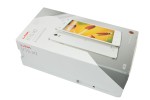
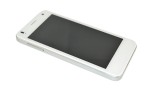


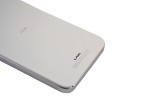
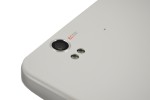



 Lenovo A7000 Preview
Lenovo A7000 Preview Your verdict on Android M, iOS 9 and Watch OS 2.0
Your verdict on Android M, iOS 9 and Watch OS 2.0 HTC One E9+ performance benchmarks
HTC One E9+ performance benchmarks Xiaomi Mi 4i battery life test
Xiaomi Mi 4i battery life test HTC One M9+ preview
HTC One M9+ preview
Comments
Rules for posting